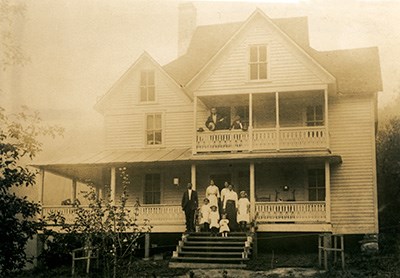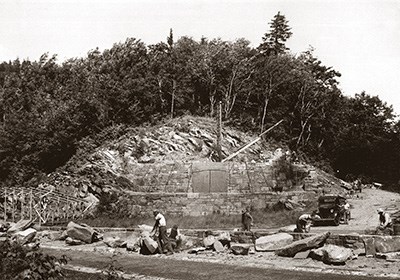
Creating a National Park Becoming a national park was not easy for the Great Smokies. Joining the National Park System took a lot of money and the hard work of thousands of people. Read about some of the individuals involved in founding the national park... Establishing most of the older parks located in the western United States, such as Yellowstone, was fairly easy. Congress merely carved them out of lands already owned by the government—often places where no one wanted to live anyway. But getting park land in this area was a different story. The land that became Great Smoky Mountains National Park was owned by hundreds of small farmers and a handful of large timber and paper companies. A New Idea The idea to create a national park in these mountains started in the late 1890s. A few farsighted people began to talk about a public land preserve in the cool, healthful air of the southern Appalachians. A bill even entered the North Carolina Legislature to this effect, but failed. By the early 20th century, many more people in the North and South were pressuring Washington for some kind of public preserve. Efforts to create a national park became successful in the mid-1920s, with most of the hard-working supporters based in Knoxville, Tennessee and Asheville, North Carolina. Surprisingly, motorists had the biggest role in the push for a national park. The newly formed auto clubs, mostly branches of the AAA, were interested in good roads through beautiful scenery on which they could drive their shiny new cars. In May, 1926, a bill was signed by President Calvin Coolidge that provided for the establishment of Great Smoky Mountains National Park and Shenandoah National Park. This allowed the Department of the Interior to assume responsibility for administration and protection of a park in the Smokies as soon as 150,000 acres of land had been purchased. 
Acquiring Lands Since the government was not allowed to buy land for national park use, the former political boosters became fund raisers. In the late 1920s, the Legislatures of Tennessee and North Carolina appropriated $2 million each for land purchases. Additional money was raised by individuals, private groups, and even school children who pledged their pennies. By 1928, a total of $5 million had been raised. The Laura Spelman Rockefeller Memorial Fund matched what had been raised and donated $5 million, assuring the purchase of the remaining land. But buying the land was difficult, even with the money in hand. There were thousands of small farms, large tracts, and other miscellaneous parcels that had to be surveyed and appraised. The timber and paper companies had valuable equipment and standing inventory which required compensation. Worse, in some ways, were the emotional losses to people who had to walk away from their homes. Lifetime leases allowed some people to stay temporarily, particularly if they were too old or too sick to move. Others could be granted leases on a short-term basis. However, they could not cut timber, hunt and trap at will, or otherwise live as they always had. 
Building the Park The first Superintendent of the new park arrived in 1931. By 1934, the states of Tennessee and North Carolina had transferred deeds for 300,000 acres to the federal government. Congress thus authorized full development of public facilities. Much of the early development of facilities and restoration of early settlers' buildings was done by the Civilian Conservation Corps (CCC), an agency created during the Depression to provide work and wages for unemployed young men. The CCC worked from 1933 to 1942 when World War II finally shut the program down. Many of the trails, campgrounds, and the beautiful stone bridges and buildings are examples of their work. The park was formally dedicated by President Franklin Roosevelt in September, 1940. He spoke from the Rockefeller Memorial at Newfound Gap astride the Tennessee - North Carolina state line. That ceremony dedicated a sanctuary that is not a local park, a county park, or even a state park, but a national park for all the people of the country and the rest of the world to enjoy. |
Last updated: November 16, 2015
